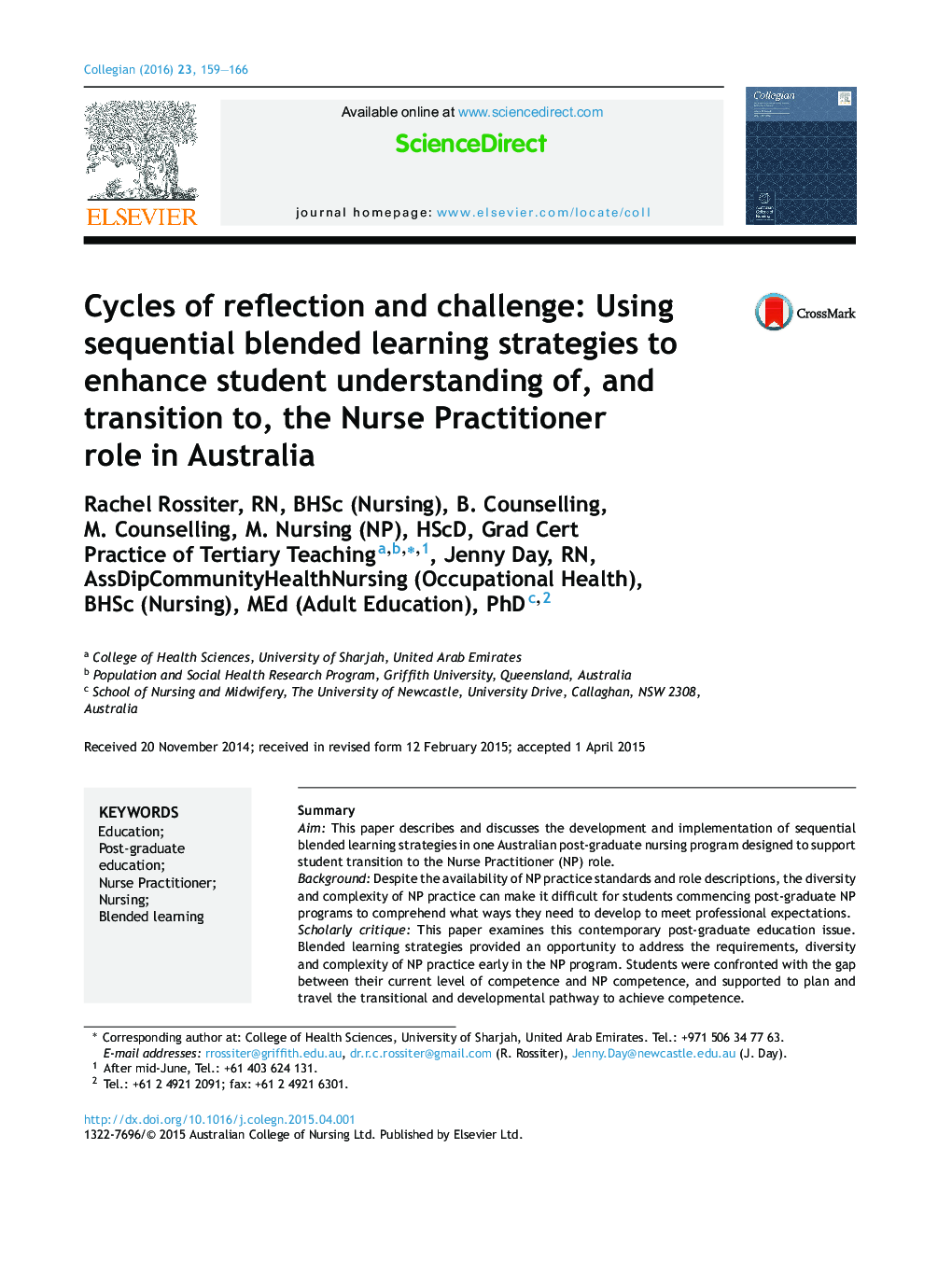| Article ID | Journal | Published Year | Pages | File Type |
|---|---|---|---|---|
| 2646070 | Collegian | 2016 | 8 Pages |
SummaryAimThis paper describes and discusses the development and implementation of sequential blended learning strategies in one Australian post-graduate nursing program designed to support student transition to the Nurse Practitioner (NP) role.BackgroundDespite the availability of NP practice standards and role descriptions, the diversity and complexity of NP practice can make it difficult for students commencing post-graduate NP programs to comprehend what ways they need to develop to meet professional expectations.Scholarly critiqueThis paper examines this contemporary post-graduate education issue. Blended learning strategies provided an opportunity to address the requirements, diversity and complexity of NP practice early in the NP program. Students were confronted with the gap between their current level of competence and NP competence, and supported to plan and travel the transitional and developmental pathway to achieve competence.ConclusionWorking with students from early on in their degree enables them to progressively and more clearly envision the gap between their current level of competence and that required of the Australian NP role. Adopting a sequential blended learning approach is one way to engage students in preparing for their future role. Consideration of design elements integral to blended learning approaches is important, including a need for authenticity and support. Preparing NPs who fully comprehend the nature and scope of their practice is both vital for safety and of strategic importance to the nursing profession. Examples of how to facilitate student understanding of the NP role are needed to inform educational practice.
